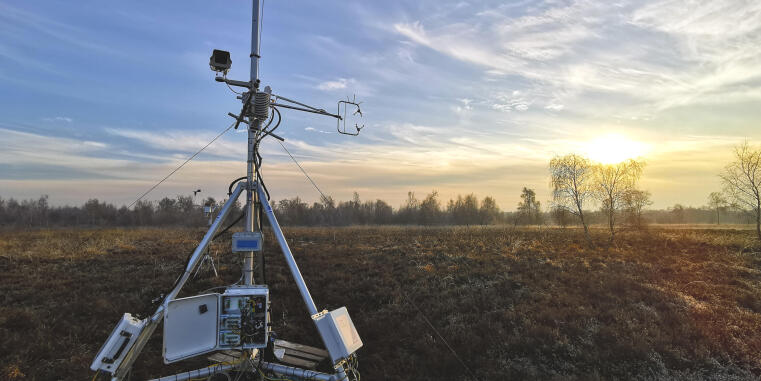

Project PEAT (2022-2025)
In this project we aim to understand the feedback from degrarded peatland ecosystems to the climate and quantify their capacity for mitigating climate change, by means of direct observations and modelling techniques. For this purpose we have established two eddy covariance stations in two degraded raised bogs in northwest Germany where we measure ecosystem greenhouse gas fluxes continuously with the eddy covariance technique and collect biometeorological measurements to seperate the biotic and abiotic drivers of gas fluxes.

To address our objectives we emply a mixture of in-situ observations, data analysis, and modeling approaches to address three main objectives:
1) Quantify ecosytem carbon fluxes and budgets
2) Identify driving mechanisms of greenhouse gas and water fluxes in response to climate, land-use, and vegetation type
3) Model the interdependency of gas and water fluxes with climatology, ecophysiology, and phenology under extreme climatic conditions (i.e., drought, heatwaves)
The eddy covariance station in Amtsvenn-Hündfelder Moor (DE-Amv) was established in collaboration with the Biological Station Zwillbrock in September 2022 and the second station in Oppenwehe Moor was established in collaboration with the Minden-Lübbecke district in July 2023. Both stations are sites of strong collaboration within the Institute of Landscape Ecology of University of Münster, and provide a diverse range of teaching and research opportunities. DE-Amv is an ICOS candiate site.


